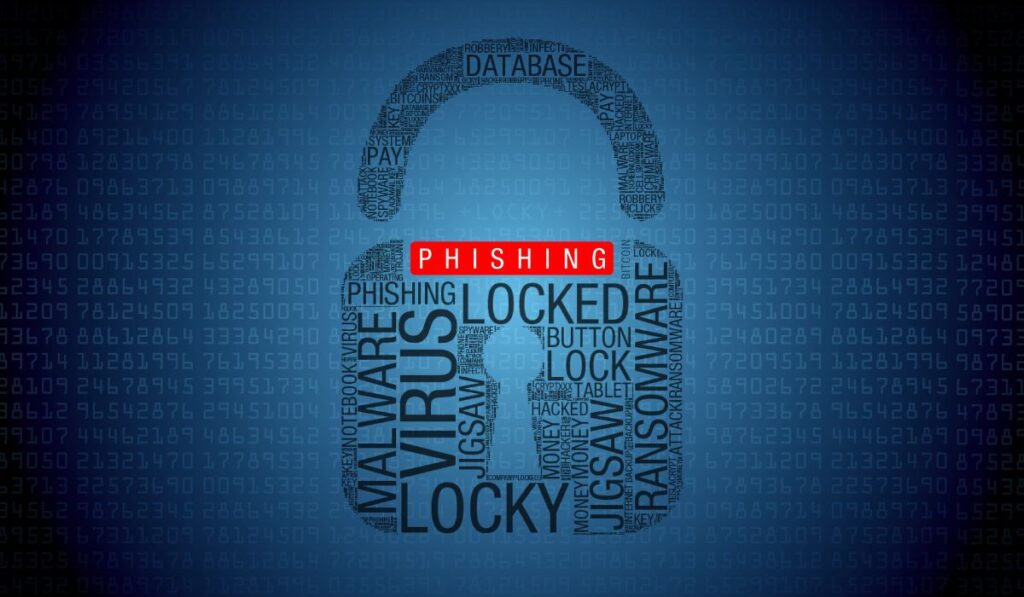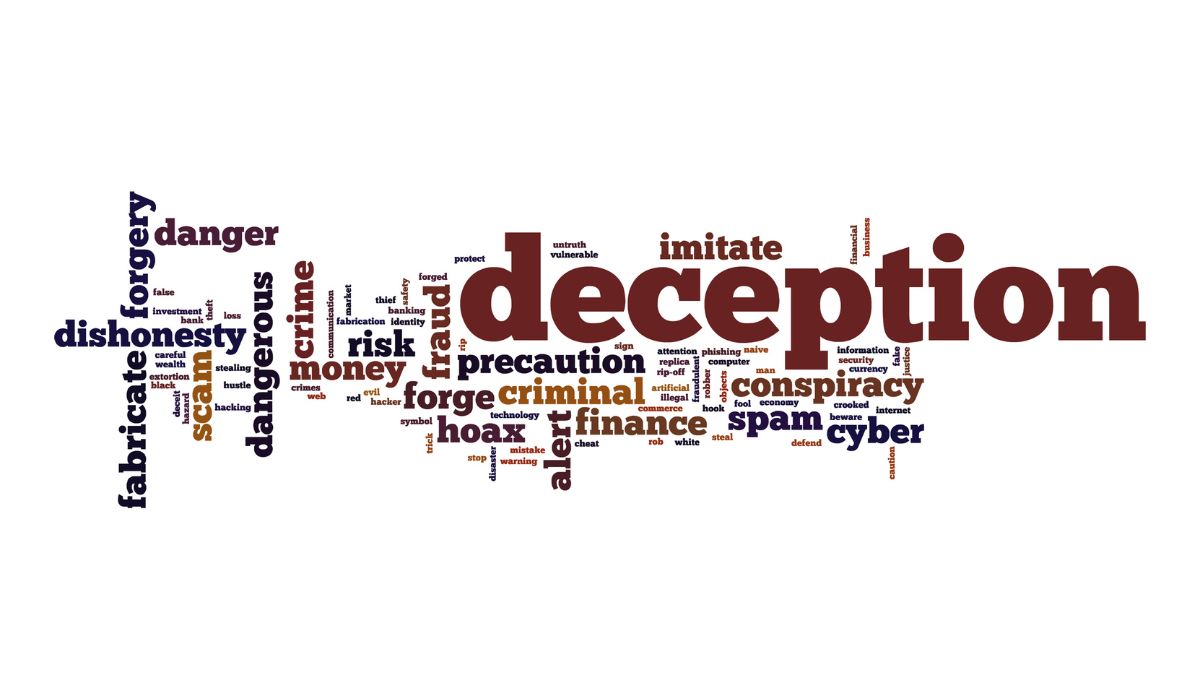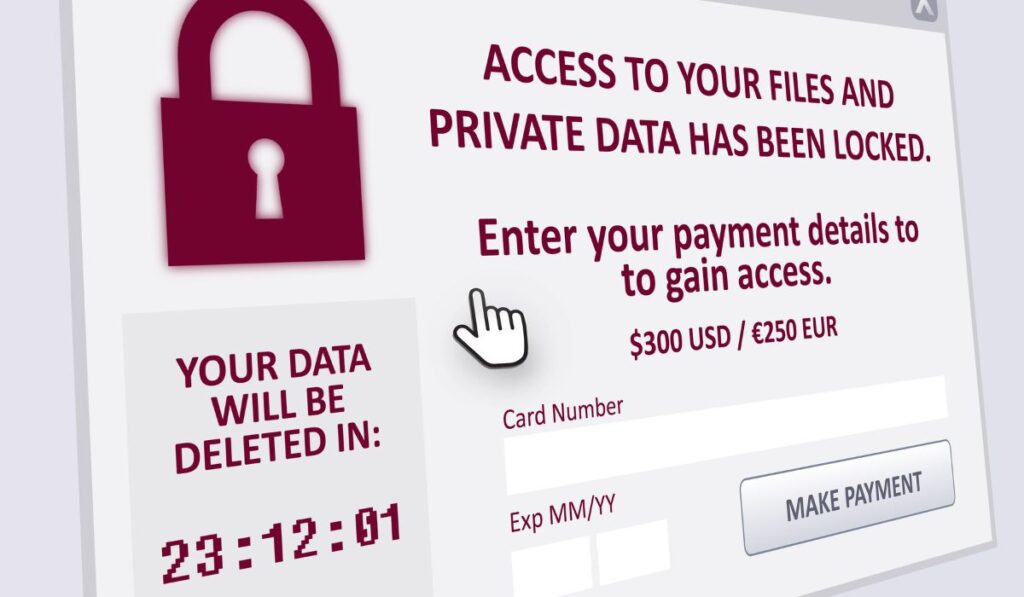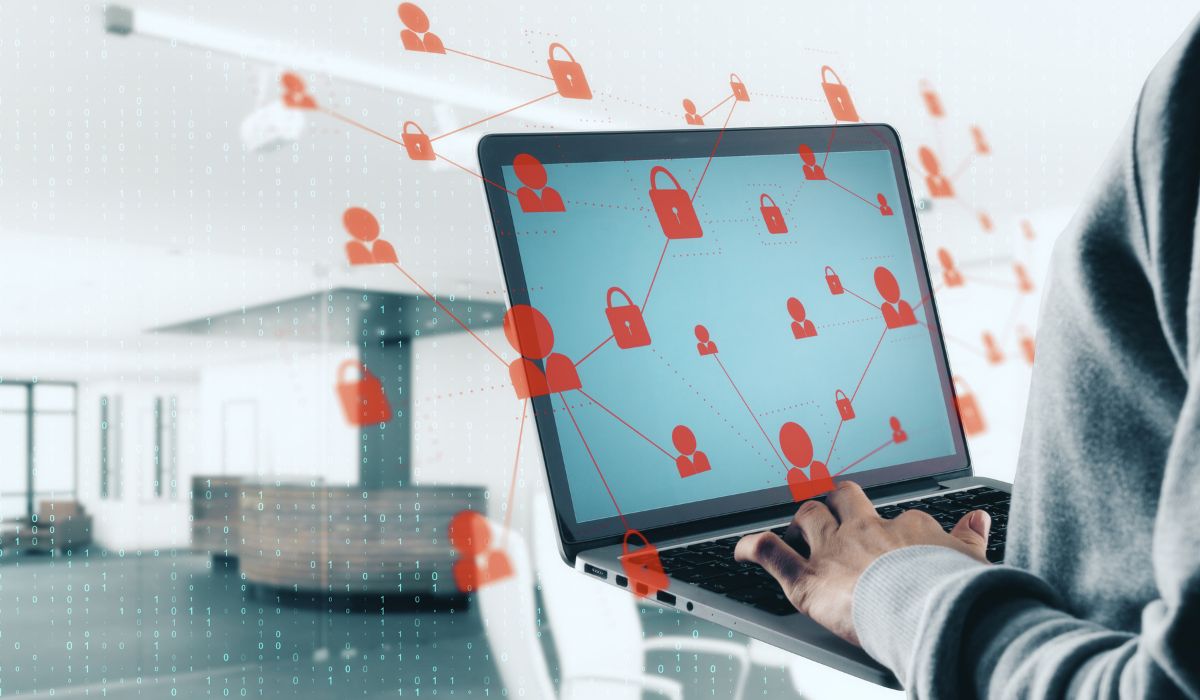Stay Protected: Shield Your Business from Deceptive Phishing
Deceptive phishing is a malicious technique used by cybercriminals to trick users into divulging sensitive information or performing actions that compromise their security. This article aims to provide an overview of deceptive phishing, including its tactics, common targets, and preventive measures. By understanding how deceptive phishing works and learning to recognize its warning signs, users can better protect themselves against these sophisticated attacks. This article will explore various strategies to identify and prevent deceptive phishing, empowering individuals and organizations to safeguard their sensitive information and digital well-being.
Table of Contents
Deceptive Phishing Explained
Deceptive phishing is a form of online fraud where attackers use various tactics to trick individuals and organizations into revealing sensitive information, such as login credentials, financial data, or personal details. This was and continues to be the most popular form of phishing scams. This type of phishing attack relies on psychological manipulation and social engineering techniques to deceive the target.
Attackers often disguise themselves as trustworthy entities, such as banks, government agencies, or popular websites, to gain the victim’s trust. They may send convincing emails or messages that appear legitimate, using logos, branding, and language that mimic the real organization. These messages often contain urgent requests or enticing offers to create a sense of urgency or curiosity, urging the recipient to take immediate action.
The success of deceptive phishing attacks relies on exploiting human vulnerabilities, such as curiosity, fear, or the desire for reward. By creating a sense of urgency or exploiting emotions, attackers aim to bypass the recipient’s critical thinking and prompt them to disclose sensitive information or click on malicious links.
It’s crucial to be cautious and vigilant when encountering emails or messages that seem suspicious or unfamiliar. If an email’s subject line doesn’t make sense or the content seems unrelated to your interests, it’s advisable to delete it immediately. Developing a healthy skepticism and being aware of the tactics used in deceptive phishing can significantly reduce the risk of falling victim to these scams.
Types of Deceptive Phishing
Email-Based Deceptive Phishing
Email-based deceptive phishing is a common type of deceptive phishing attack where attackers send fraudulent emails to trick recipients into providing sensitive information or taking malicious actions. This can include impersonating a trusted organization or individual, such as a bank or colleague, to deceive the recipient. The emails often contain urgent requests for personal information, account details, or financial transactions. Attackers may also use tactics like attaching malicious files or embedding fake links that lead to phishing websites.
Website-Based Deceptive Phishing
Website-based deceptive phishing involves creating clone websites that closely resemble legitimate websites to deceive users. Attackers may use deceptive URLs that appear similar to the original website’s URL or use domain names that are misspelled or slightly altered. These clone websites are designed to trick users into entering their login credentials or other sensitive information, which is then captured by the attackers. Social engineering techniques, such as displaying fake security warnings or using persuasive language, are often employed to manipulate users into providing their information.
Both email-based and website-based deceptive phishing attacks exploit the trust and familiarity individuals have with legitimate organizations or websites. By mimicking the appearance and behavior of trusted entities, attackers aim to deceive users and gain unauthorized access to their sensitive information. It is important to remain cautious and verify the authenticity of emails and websites before sharing any personal or financial information.
Recognizing Deceptive Phishing Indicators
Recognizing deceptive phishing indicators is crucial for protecting yourself against these types of attacks. Here are some key red flags to watch out for:
Deceptive Phishing Emails
- Suspicious senders: Be cautious of emails from unfamiliar or suspicious email addresses. Look for inconsistencies in the sender’s name or domain.
- Grammar errors and typos: Phishing emails often contain grammatical mistakes, misspelled words, or awkward language that may indicate they are not from a legitimate source.
- Unusual requests: Be wary of emails that ask for personal information, login credentials, financial details, or urgent actions. Legitimate organizations usually don’t request such information via email.
- Generic greetings: Phishing emails often use generic greetings like “Dear Customer” instead of addressing you by name.
- Unexpected attachments or links: Exercise caution when opening attachments or clicking on links in emails, especially if they are unexpected or come from unknown sources.
Deceptive Phishing Websites
- Unsecure connections: Look for the padlock symbol and “https” in the website’s URL, indicating a secure connection. Avoid entering personal information on websites that use “http” or show a warning message about an unsecure connection.
- Misleading domain names: Check the URL carefully for any misspellings, extra characters, or slight variations that may indicate a deceptive website. Attackers often use similar-looking domain names to trick users into believing they are on a legitimate site.
- Poor website design or content: Phishing websites may have low-quality design, inconsistent branding, or content that contains grammatical errors or poor formatting.
- Unusual or unexpected requests: Be cautious if a website asks for excessive personal information or requests credentials or financial details that are not necessary for the given context.
Remember, it’s important to trust your instincts and be skeptical of any email or website that seems suspicious. When in doubt, verify the authenticity of the communication through official channels or contact the organization directly.
Preventing Deceptive Phishing Attacks

Preventing deceptive phishing attacks requires a proactive approach and the implementation of various security measures. Here are some best practices to consider:
User Education
Conduct regular cybersecurity awareness training to educate users about deceptive phishing techniques, common red flags, and safe online practices. Teach them to be cautious when interacting with emails, attachments, and links, and encourage reporting of suspicious messages.
Email Filtering and Spam Detection
Implement robust email filtering systems that can identify and block deceptive phishing emails. Utilize spam detectors to prevent suspicious messages from reaching users’ inboxes.
Web Security Measures
Deploy web security solutions that can detect and block deceptive phishing websites. These solutions can analyze website URLs, content, and reputation to identify potential threats and warn users before accessing malicious sites.
Multi-Factor Authentication (MFA)
Enable MFA for user accounts whenever possible, especially for sensitive systems or platforms. MFA adds an extra layer of security by requiring additional verification steps, making it harder for attackers to gain unauthorized access.
Regular Software Updates
Keep all software, including operating systems, web browsers, and security applications, up to date. Updates often include patches for vulnerabilities that attackers may exploit for deceptive phishing attacks.
Anti-Phishing Tools
Utilize anti-phishing tools and browser extensions that can detect and warn users about potentially deceptive websites or suspicious links. These tools can provide an additional layer of protection while browsing the internet.
Incident Response Plan
Develop an incident response plan that outlines the steps to be taken in case of a deceptive phishing attack. This plan should include procedures for detecting, containing, and mitigating the impact of such attacks.
By implementing these preventive measures and fostering a culture of cybersecurity awareness, organizations can significantly reduce the risk of falling victim to deceptive phishing attacks. Regularly reviewing and updating these practices based on emerging threats and evolving attack techniques is also essential.
Enhancing User Awareness and Training
Enhancing user awareness and training is crucial in mitigating the risks associated with deceptive phishing attacks. Here are some strategies to consider:
- Regular Training Sessions: Conduct periodic cybersecurity training sessions to educate employees about deceptive phishing threats. Cover topics such as identifying suspicious emails, recognizing red flags, and safe online practices. Provide practical examples and use real-life scenarios to make the training more engaging and relatable.
- Awareness Campaigns: Launch awareness campaigns that highlight the risks and consequences of deceptive phishing attacks. Use newsletters, posters, intranet portals, and other communication channels to share information about the latest phishing techniques and trends. Include tips on how to spot and report deceptive phishing attempts.
- Phishing Simulation Exercises: Conduct phishing simulation exercises to test employees’ ability to recognize and respond to deceptive phishing attacks. These exercises involve sending simulated phishing emails to employees and tracking their responses. Provide immediate feedback and use the results as a basis for further training.
- Reporting Mechanisms: Establish a clear and easy-to-use reporting mechanism for employees to report suspicious emails or phishing attempts. Encourage employees to report any suspicious activity promptly, even if they are uncertain about its legitimacy. Ensure that reported incidents are handled promptly and appropriately.
- Continuous Education: Cybersecurity threats are constantly evolving, so it is important to provide ongoing education and updates to employees. Keep them informed about the latest phishing techniques, trends, and best practices through regular communication channels, newsletters, and refresher training sessions.
- Executive Support: Gain the support of top-level executives and managers in promoting cybersecurity awareness. When leaders prioritize and participate in training sessions, employees are more likely to take the training seriously and adopt secure behaviors.
Remember that enhancing user awareness and training should be an ongoing process. Regularly assess the effectiveness of the training programs and make adjustments as needed to address emerging threats and reinforce the importance of staying vigilant against deceptive phishing attacks.
Incident Response and Recovery
Having a well-defined incident response plan is crucial for effectively addressing and recovering from deceptive phishing attacks. Here are some key considerations:
- Incident Response Team: Establish a dedicated incident response team consisting of individuals with the necessary technical expertise and knowledge of deceptive phishing attacks. Define roles, responsibilities, and escalation procedures within the team.
- Incident Identification and Classification: Develop procedures to identify and classify deceptive phishing incidents promptly. This includes establishing mechanisms for employees to report suspicious emails or websites and implementing security monitoring tools to detect phishing attempts.
- Incident Containment and Investigation: Upon identifying a deceptive phishing incident, take immediate steps to contain the impact. This may involve isolating affected systems, disabling compromised accounts, and preserving evidence for further investigation. Conduct a thorough forensic analysis to understand the extent of the attack, the entry point, and potential damage.
- Incident Communication and Reporting: Establish a communication protocol to notify relevant stakeholders about the incident, including management, legal teams, and affected individuals. Clearly communicate the steps being taken to address the situation and provide guidance to affected parties. Report the incident to appropriate authorities, such as law enforcement or regulatory agencies, if necessary.
- Recovery and Remediation: Develop a comprehensive plan for recovering from deceptive phishing attacks. This may involve restoring affected systems from clean backups, patching vulnerabilities, and implementing additional security controls to prevent future incidents. Regularly monitor and review systems to ensure the complete removal of any malicious presence.
- Lessons Learned and Continuous Improvement: After the incident is resolved, conduct a post-incident analysis to identify lessons learned and areas for improvement. Update policies, procedures, and training materials based on the insights gained from the incident. Share the lessons learned with employees to reinforce cybersecurity awareness and prevention.
Collaborating with cybersecurity professionals, such as incident response teams or external experts, can provide valuable expertise and support in the incident response and recovery process. Their knowledge and experience can help ensure a comprehensive and efficient response to deceptive phishing attacks.
Pillar Support: Strengthening Phishing Defense
Pillar Support is a trusted partner in strengthening your organization’s defense against phishing attacks, including deceptive phishing. With our expertise in cybersecurity, we offer customized solutions tailored to your specific needs. Our services include:
- Phishing Detection and Mitigation: We deploy advanced technologies and techniques to identify and block deceptive phishing attempts targeting your organization. By leveraging robust email security measures, web filtering solutions, and threat intelligence, we proactively detect and mitigate phishing threats before they can cause harm.
- Incident Response Planning: We assist you in developing a comprehensive incident response plan specifically designed to address deceptive phishing attacks. Our experts work with you to define incident response procedures, establish communication protocols, and conduct tabletop exercises to ensure preparedness in the event of an attack.
- Security Assessments: Our team conducts thorough security assessments to identify vulnerabilities and weaknesses in your systems, processes, and employee awareness. Through comprehensive assessments, we provide actionable recommendations to enhance your phishing defense strategy and overall cybersecurity posture.
- Fraud Awareness Training: We offer tailored training programs to educate your employees about the risks and techniques associated with deceptive phishing. Our training modules include real-life examples, best practices for identifying and reporting phishing attempts, and strategies for maintaining a security-conscious mindset.
Partnering with Pillar Support empowers your organization to stay one step ahead of deceptive phishing threats. By leveraging our expertise and solutions, you can enhance your defense mechanisms, minimize the risk of successful attacks, and effectively respond to phishing incidents when they occur.
Contact us today to learn more about how Pillar Support can strengthen your phishing defense and protect your organization from deceptive phishing threats.
Frequently Asked Questions
What Is an Example of Deceptive Phishing?
An example of deceptive phishing is an email that appears to be from a reputable organization, such as a bank or an online service provider, requesting the recipient to update their account information by clicking on a link provided in the email. The email may use deceptive tactics, such as urgency or threats of account suspension, to trick the recipient into providing their personal information on a fake website.
What Are the 4 Types of Phishing?
The four types of phishing attacks are:
1. Deceptive Phishing: The attacker poses as a trustworthy entity and tricks victims into providing their sensitive information.
2. Spear Phishing: The attacker targets specific individuals or organizations with personalized and convincing phishing emails.
3. Whaling: Similar to spear phishing, but specifically targeting high-profile individuals, such as CEOs and executives.
4. Pharming: The attacker redirects victims to fake websites that imitate legitimate ones in order to collect their sensitive information.
What Is the Difference Between Spoofing and Phishing?
Spoofing refers to the act of disguising the source of an email, IP address, or website to make it appear as if it is coming from a trusted entity or a different source altogether. It can be used in various types of attacks, including phishing. Phishing, on the other hand, is a broader term that encompasses the act of tricking individuals into revealing their sensitive information, usually through deceptive emails, websites, or other communication methods.
What’s an Example of Phishing?
An example of phishing is receiving an email that appears to be from a popular online shopping website, claiming that there is an issue with your account and requesting you to click on a link to resolve it. The link leads to a fake website that collects your login credentials and other personal information, which can then be used for fraudulent purposes.






